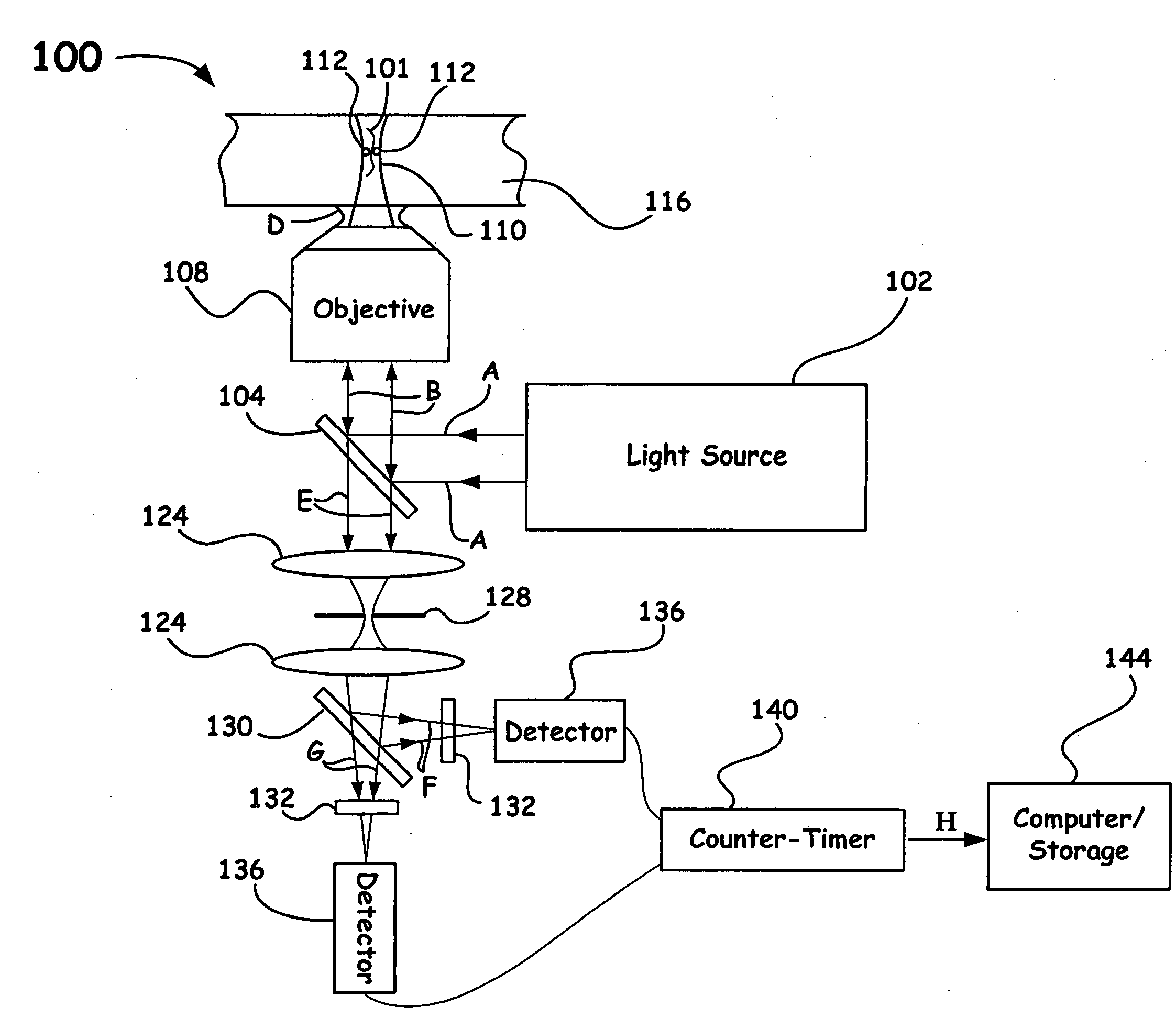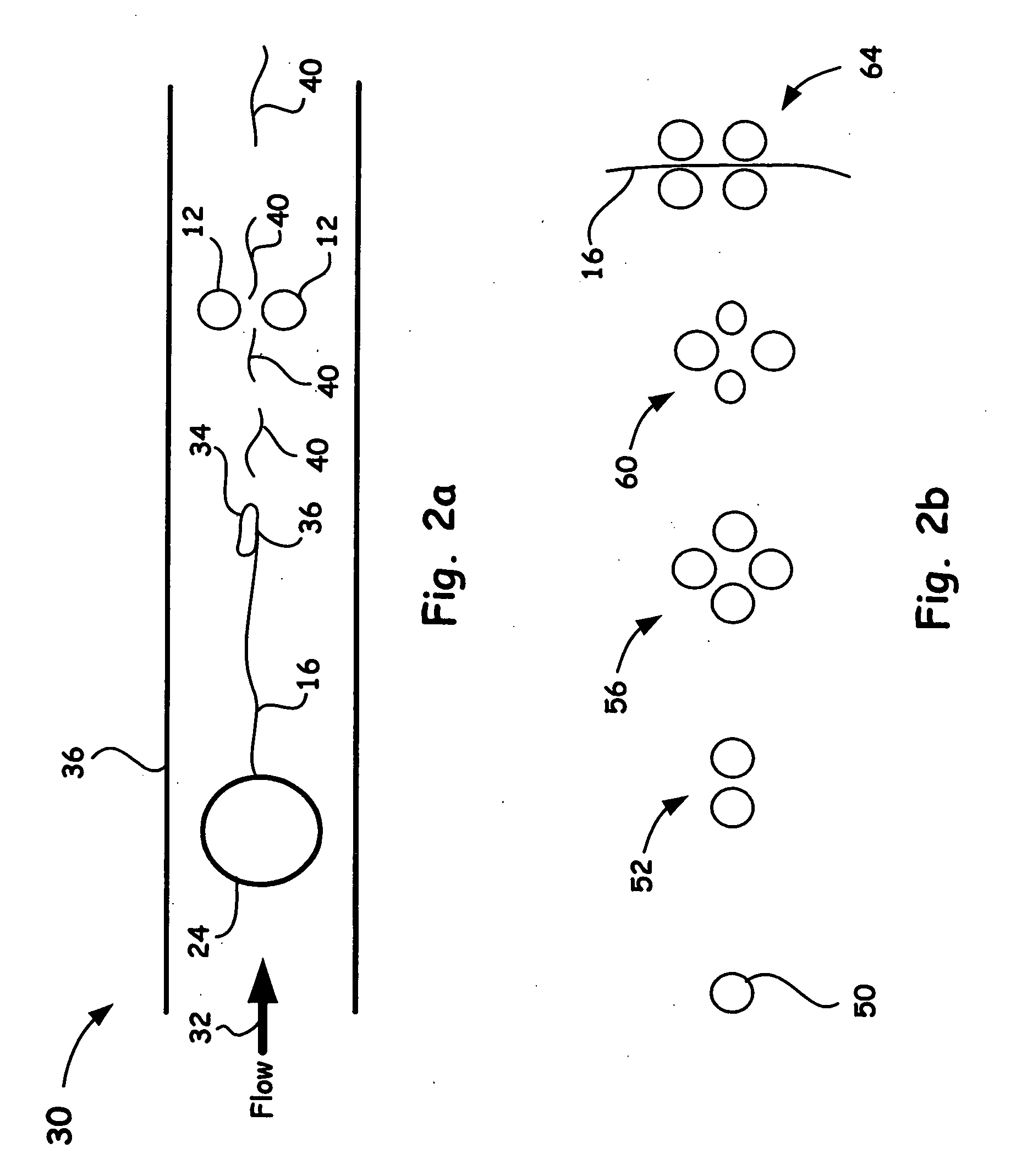Sequencing single molecules using surface-enhanced Raman scattering
a surface-enhanced, raman-based technology, applied in the field of single-molecule detection, can solve the problems of low sensitivity, low sensitivity historically limited its application to highly concentrated samples, and low typical molecular cross-section of raman-based scattering, etc., and achieves the effect of simple design
- Summary
- Abstract
- Description
- Claims
- Application Information
AI Technical Summary
Benefits of technology
Problems solved by technology
Method used
Image
Examples
example detection
Apparatus
[0058]FIG. 4 illustrates an example detection apparatus, generally designated as reference numeral 100, for monitoring a predetermined Raman signal, e.g., SERS, and / or SEERS, and / or CARS, and / or SECARS, from individual nucleotides of a given molecule 101. Such an arrangement often can include electromagnetic radiation source 102, a mirror 104, such as a dichroic, an optical element 108, such as, but not limited to a microscope objective, resonant structures 112 capable of being configured about a channel, for example, within an aqueous solution 116, one or more optical elements 124 coupled with a pinhole 128, one or more beam directing elements 130, and one or more optical filters 132, such as edge filters, band-pass filters and / or notch filters to allow desired bands of electromagnetic radiation resulting from the induced Raman radiation to be monitored by detectors 136. Such monitored radiation can be directed to coupled electronics, such as, but not limited to, a counter...
PUM
 Login to View More
Login to View More Abstract
Description
Claims
Application Information
 Login to View More
Login to View More - R&D
- Intellectual Property
- Life Sciences
- Materials
- Tech Scout
- Unparalleled Data Quality
- Higher Quality Content
- 60% Fewer Hallucinations
Browse by: Latest US Patents, China's latest patents, Technical Efficacy Thesaurus, Application Domain, Technology Topic, Popular Technical Reports.
© 2025 PatSnap. All rights reserved.Legal|Privacy policy|Modern Slavery Act Transparency Statement|Sitemap|About US| Contact US: help@patsnap.com



